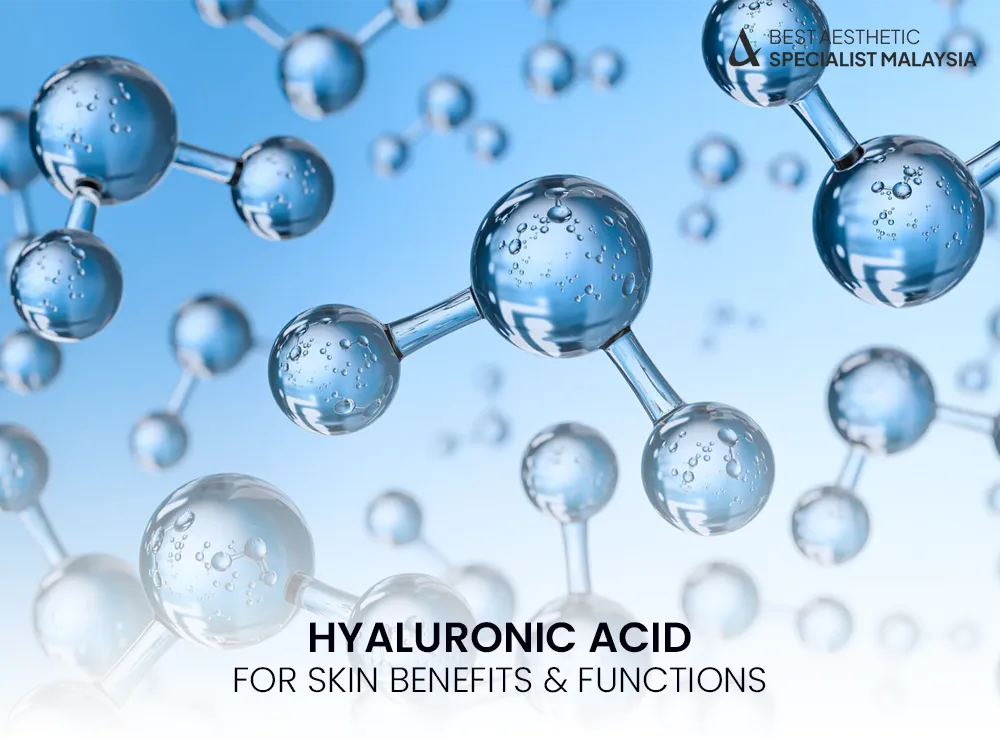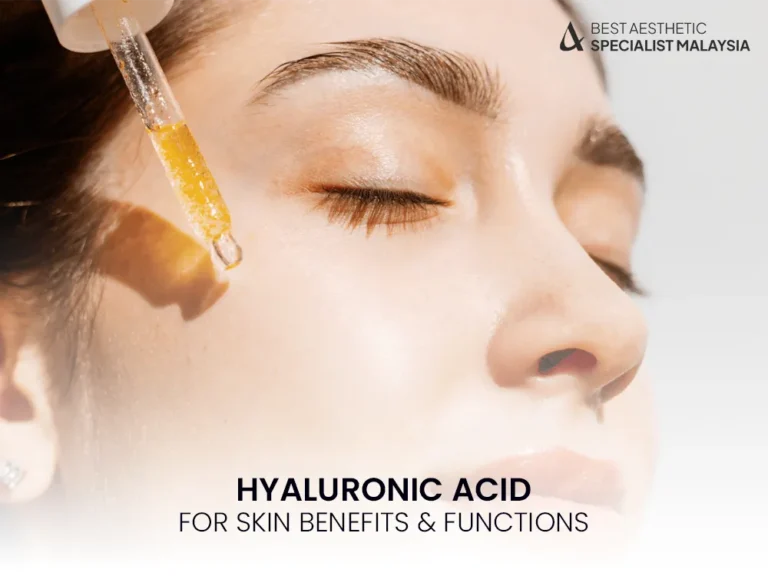Hyaluronic acid is a naturally occurring substance found in the fluids of the eyes and joints, where it serves as a cushion and lubricant. It helps protect and support the joints and other tissues. Various forms of hyaluronic acid are also used in cosmetic treatments. Additionally, hyaluronic acid may influence the body’s response to injury and contribute to reducing inflammation.
What is Hyaluronic Acid?

Hyaluronic acid is a naturally occurring glycosaminoglycan found in the body—primarily in the skin, connective tissues, and eyes. Its primary function is to retain moisture, with the remarkable ability to hold up to 1,000 times its weight in water. This makes it an indispensable molecule for maintaining skin hydration and elasticity.
HA is synthesized by hyaluronan synthase enzymes and can be categorized into:
High molecular weight HA (HMW-HA): Known for its anti-inflammatory properties and moisture retention.
Low molecular weight HA (LMW-HA): Penetrates deeper into the skin, promoting cellular repair and collagen production.
Benefits of Hyaluronic Acid for Skin
Intense Hydration
HA’s humectant properties draw moisture from the environment, delivering it to the skin’s surface. This results in a plump, dewy complexion.
Anti-Aging Effects
HA reduces the appearance of fine lines and wrinkles by improving skin elasticity and supporting dermal structure. Clinical studies highlight its role in stimulating fibroblasts and enhancing collagen synthesis.
Skin Barrier Protection
By reinforcing the lipid barrier, HA minimizes trans-epidermal water loss (TEWL), shielding the skin from environmental aggressors such as UV radiation and pollutants.
Wound Healing
Low molecular weight HA accelerates wound healing by promoting keratinocyte migration and angiogenesis, critical for tissue repair.
Soothing Properties
HA’s anti-inflammatory and antioxidant activities make it ideal for calming sensitive or irritated skin.
Side effects of hyaluronic acid
| Side Effect | Description | Commonality |
|---|---|---|
| Skin Irritation | Redness, itching, or swelling at the application site, particularly in cosmetic use (e.g., injections). | Rare to Moderate |
| Allergic Reaction | Symptoms like rash, hives, or difficulty breathing, although rare. | Rare |
| Injection Site Reactions | Pain, swelling, bruising, or redness at the site of injection, especially with dermal fillers. | Common (temporary) |
| Headache | Can occur, particularly after hyaluronic acid injections or dermal fillers. | Rare |
| Dizziness | Some individuals may feel light-headed or dizzy after injection. | Rare |
| Nausea | May occur, though it is uncommon. | Very Rare |
| Joint Pain or Stiffness | Can sometimes occur after intra-articular injections (e.g., for osteoarthritis). | Common (temporary) |
| Infection | Slight risk of infection if injections are not performed under sterile conditions. | Rare |
| Vision Disturbances | If used in the eye (e.g., eye drops), some people may experience blurred vision or discomfort. | Rare |
| Swelling | Swelling in the treated area, especially in facial cosmetic procedures. | Common (temporary) |
Note: Side effects may vary depending on the form of hyaluronic acid (e.g., injections, topical products, eye drops), and most reactions tend to be mild and temporary. Always consult a healthcare provider for advice tailored to individual circumstances.
Medical Applications of Hyaluronic Acid
Dermal Fillers: Injectable HA is used in aesthetic medicine to restore facial volume and contour.
Topical Treatments: HA serums and creams enhance hydration and improve skin texture.
Wound Care: Applied in gel form, HA facilitates faster recovery of burns and surgical wounds.
Ophthalmology: HA-based eye drops alleviate dry eye syndrome.
Orthopedics: Viscosupplementation with HA injections relieves joint pain in conditions like osteoarthritis.
Hyaluronic Acid vs. Retinol
| Feature | Hyaluronic Acid | Retinol |
|---|---|---|
| Primary Function | Hydration and skin plumping | Cellular turnover and collagen stimulation |
| Molecular Action | Retains moisture in the extracellular matrix | Stimulates epidermal renewal |
| Skin Type Suitability | Suitable for all skin types, including sensitive skin | May cause irritation, not ideal for sensitive skin |
| Timeframe for Results | Immediate hydration | Visible results in 4-12 weeks |
| Usage in Routine | Can be used daily, AM and PM | Typically used at night to minimize photosensitivity |
Cleanse: Start with a gentle cleanser to prepare your skin.
Tone: Use an alcohol-free toner to balance the skin’s pH.
Apply HA Serum: A few drops of HA serum lock in hydration.
Moisturize: Follow with a hydrating moisturizer to seal in the benefits.
SPF Protection: During the day, complete your routine with sunscreen to protect against UV damage.
Frequently Asked Questions
1. Can hyaluronic acid cause acne? No, HA is non-comedogenic and suitable for acne-prone skin. Its lightweight formulation hydrates without clogging pores.
2. Can I use hyaluronic acid with retinol? Yes, HA pairs well with retinol. Apply HA first to hydrate and buffer the skin, minimizing retinol-induced irritation.
3. Is hyaluronic acid safe for pregnant women? Topical HA is generally safe during pregnancy, but consult a dermatologist for personalized advice.
4. How often should I use hyaluronic acid? HA can be used twice daily—morning and night—as part of your skincare regimen.
5. What is the difference between hyaluronic acid and sodium hyaluronate? Sodium hyaluronate is a salt derivative of HA with smaller molecules, allowing deeper penetration into the skin.
Future of Hyaluronic Acid in Skincare
With innovations in dermatology, HA formulations in 2025 have become more effective and customizable. Scientists are exploring nano-encapsulation technologies to enhance HA delivery, ensuring prolonged hydration and targeted action. Furthermore, advancements in HA synthesis using bioengineering promise eco-friendly and sustainable solutions.
Hyaluronic acid remains a pivotal ingredient in modern skincare, celebrated for its versatility and scientifically backed benefits. By incorporating HA into your routine, you can achieve healthier, more radiant skin while staying at the forefront of skincare science.

